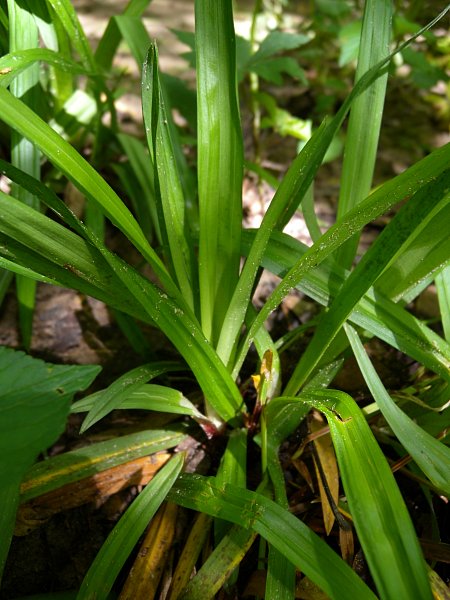
The inflorescence is about 4-8" in length, consisting of a lower pistillate spikelet with leafy bract, an upper pistillate spikelet with leafy bract, and a terminal staminate spikelet (on rare occasions, there may be an additional pistillate spikelet with leafy bract). The lower pistillate spikelet is widely separately from the upper pistillate spikelet and terminal staminate spikelet. The pistillate spikelets are 6-20 mm. (¼-¾") in length and they have up to 8 perigynia that partially overlap each other. The lower pistillate spikelet has a stiff slender peduncle about 12 mm. ( ½") in length, while the upper pistillate spikelet is nearly sessile. The slender staminate spikelet is about 12-20 mm. (½-¾") in length and it has a slender peduncle about 6-12 mm. (¼-½") long. The leafy bracts of the inflorescence resemble the leaves, except they are smaller in size; the upper bract is much smaller than the lower bract.
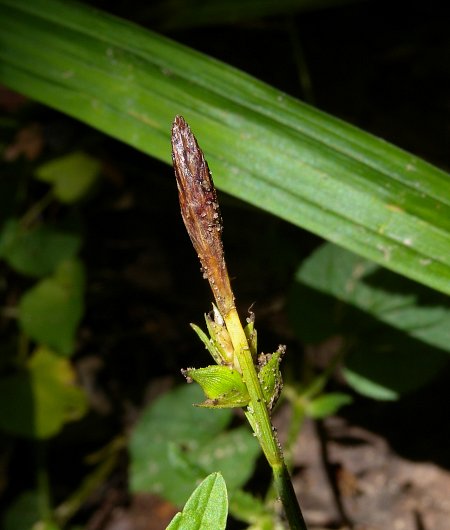
The glabrous perigynia are 5-6 mm. long, ovoid in shape, and sharply 3-angled; they have flat or slightly concave sides with many fine veins. The bases of the perigynia are wedge-shaped, while their beaks are straight or tilted slightly to one side. The pistillate scales are about 4 mm. in length and ovate in shape with awn-like tips; they have green central veins and wide membranous margins. The blooming period occurs from mid- to late spring, lasting about 1-2 weeks. The florets of the spikelets are cross-pollinated by the wind. Afterwards, the glabrous achenes develop, becoming 3.5-4.0 mm. long and 3.0 mm. across at maturity; they are ellipsoid-globoid in shape, but sharply 3-angled with flat or slightly concave sides. The root system is fibrous and rhizomatous.
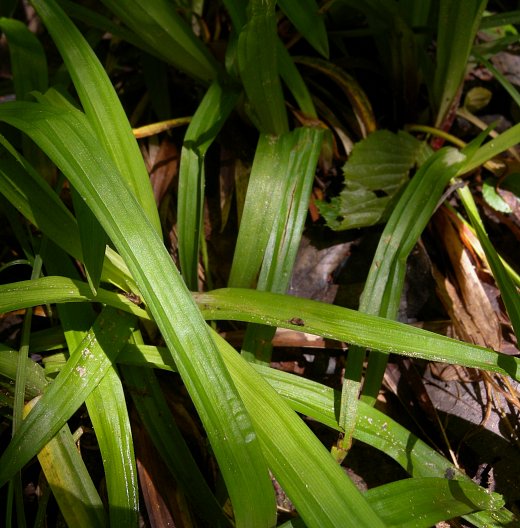
Cultivation: The preference is partial sun to medium shade, moist to mesic conditions, and a rich fertile loam with decaying organic material. This sedge will adapt to sheltered moist locations that are located underneath trees.
Range & Habitat: The native Carey's Sedge occurs primarily in southern and east-central Illinois, where it is uncommon, while in the rest of the state it is widely scattered and rare (see Distribution Map). Habitats include hilly woodlands, the bases of wooded slopes, shaded areas along the banks of streams, rocky ravines, water run-off areas in rocky woodlands, and areas along woodland paths. This is a conservative species that is found in high quality natural areas.
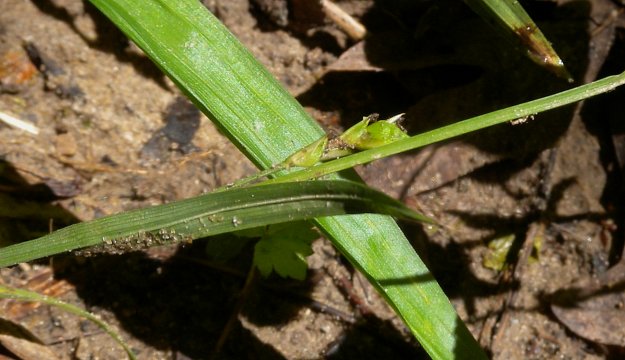
Faunal Associations: Various insects feed on Carey's Sedge and other woodland sedges (Carex spp.). These species include caterpillars of the butterfly Satyrodes appalachia (Appalachian Brown), the larvae of various leaf-mining moths (Elachista argentosa, Elachista cucullata, & Elachista madarella), various aphids (Carolinaia caricis, Iziphya flabella, Prociphilus corrugatans), various leafhoppers (mainly Cosmotettix spp.), and the stink bug Mormidea lugens. The relatively large seeds of Carey's Sedge are probably eaten by such upland gamebirds as the Wild Turkey and Bobwhite, and by such granivorous songbirds as the Eastern Towhee and various sparrows. Because the leaves of Carey's Sedge are relatively wide and some of them may persist through the winter, they are sometimes grazed by the White-Tailed Deer to a limited extent.
Photographic Location: A hilly woodland at Fox Ridge State Park in east-central Illinois.
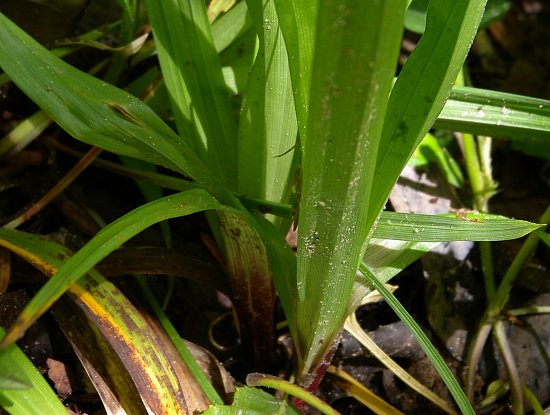
Comments: This woodland sedge has several distinctive characteristics, making it fairly easy to identify. First of all, this is the only broad-leaved sedge with reddish purple basal sheaths in Illinois. The leaves of this sedge are wider than most sedges (regularly exceeding ½" across), although they are not as wide as the leaves of White Bear Sedge (Carex albursina) and Plantain-Leaved Sedge (Carex plantaginea). Another unusual characteristic of this sedge are the sharply angular perigynia and sharply angular achenes. Most sedges (Carex spp.) have perigynia and achenes that are either non-angular or only bluntly angular. These perigynia and achenes are also relatively large in size (5-6 mm. and 3.5-4.0 mm. in length, respectively). Because Carey's Sedge has relatively wide and attractive leaves, it should be cultivated more often in protected shade gardens.